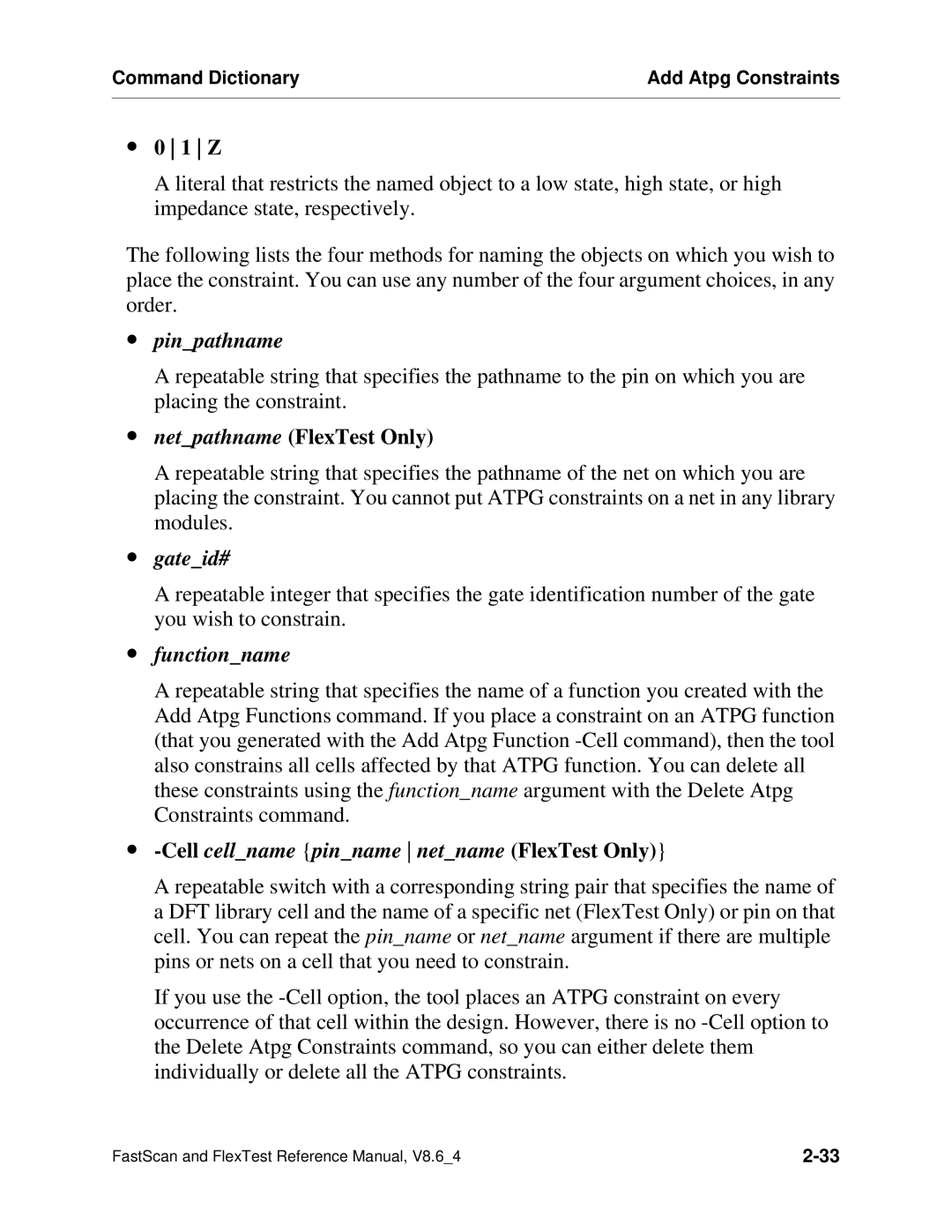Command Dictionary | Add Atpg Constraints |
|
|
∙0 1 Z
A literal that restricts the named object to a low state, high state, or high impedance state, respectively.
The following lists the four methods for naming the objects on which you wish to place the constraint. You can use any number of the four argument choices, in any order.
∙pin_pathname
A repeatable string that specifies the pathname to the pin on which you are placing the constraint.
∙net_pathname (FlexTest Only)
A repeatable string that specifies the pathname of the net on which you are placing the constraint. You cannot put ATPG constraints on a net in any library modules.
∙gate_id#
A repeatable integer that specifies the gate identification number of the gate you wish to constrain.
∙function_name
A repeatable string that specifies the name of a function you created with the Add Atpg Functions command. If you place a constraint on an ATPG function (that you generated with the Add Atpg Function
∙-Cell cell_name {pin_name net_name (FlexTest Only)}
A repeatable switch with a corresponding string pair that specifies the name of a DFT library cell and the name of a specific net (FlexTest Only) or pin on that cell. You can repeat the pin_name or net_name argument if there are multiple pins or nets on a cell that you need to constrain.
If you use the
FastScan and FlexTest Reference Manual, V8.6_4 |
